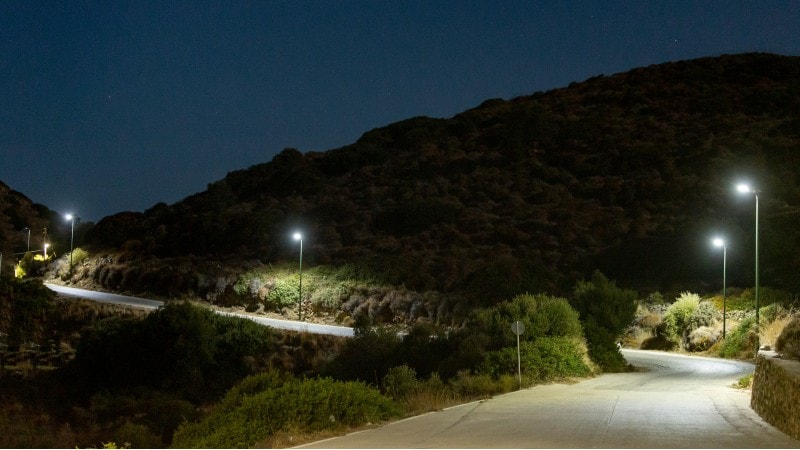17th August, 2022
17th August, 2022
Moving to solar lighting may prove beneficial in the fight against the triple crisis of climate change, rising energy costs, and energy sourcing challenges. Solar lighting, which requires no fossil fuels to operate, should be included among post-COVID recovery plans throughout the EU.
REPowerEU, which forms part of the European Commission’s larger Recovery and Resilience Facility, aims to lessen the EU’s dependence on fossil fuel imports. A greater emphasis on solar energy is at the heart of the facility’s framework. At Signify, we agree that solar lighting is an important element in the plan to diversify the EU’s energy supplies and accelerate the rollout of renewable energy.
“These crises offer us an opportunity to leapfrog into solar, when considering how we light our lives,” says Harry Verhaar, the Head of Global Public & Government Affairs at Signify. “We’re already seeing the electrification of vital sectors to reduce our energy demands and light should not be an exception. Using solar can relieve the grid, improve resilience, develop safer communities, and allow more remote places to benefit from light,” Verhaar adds.
Solar lighting for street lights can help take pressure off of the grid, either alone or as a component of hybrid peak-shaving solutions where built-in batteries are charged throughout the day and then used during peak hours.
The opportunity is enormous. Replacing the EU27’s entire stock of 56 million street lights with hybrid-solar lamps would reduce carbon emissions by 12 Mt per year, an amount equivalent to the absorption capacity of a forest half the size of Belgium. It would also free up the grid to enable the recharging of 7.3 million electric vehicles for a whole year.
Forward-thinking cities like Seville, Spain, are already making the transition. The city council there worked with Signify to install 20 Philips SunStay luminaires in its attractive Infanta Elena Park. "We will use extremely efficient and effective solar street lights to decrease energy consumption and reduce our overall greenhouse gas emissions” said Juan Espadas, Mayor of Seville.
SunStay is an all-in-one integrated solution. The lights work without the need for cables or any type of electrical connection, and they output 3,000 lumens of warm light with zero energy consumed and zero emissions released.
The Greek island of Leipsoi is realizing similar benefits after installing 28 SunStay luminaires, helping the municipality overcome issues where the electricity grid does not always follow the street layout, making mains connection difficult and expensive.
The fully autonomous and external solution requires no connections between light poles and mains power cables, making the island more weather-resilient and less susceptible to power cuts.

Leipsoi is not the only out-of-the-way location to take advantage of solar lighting. In the town of Cavallino-Treporti, in the suburbs of metropolitan Venice, SunStay luminaires are improving the lighting around the Venetian Lagoon. The area around the lagoon has always presented a challenge for traditional electrical networking because of its unique geography and remoteness.
“Thanks to our solar technology, Cavallino-Treporti is now guaranteed efficient street lighting,” says Andrea Bernardini, Signify’s Commercial Leader Systems and Public Services, Italy. “Despite multiple technical difficulties, [the residents] are now able to benefit from high light quality and improved sustainability,” he adds.
Ultimately, the benefits of moving to solar lighting are many. The technology is ready, and the costs are low. “But what’s important is speed.” says Verhaar. “To free ourselves of the climate, energy, and financial crises, leapfrogging to solar must be part of our actions ahead, but we must accelerate the jump.”
Signify Global Media relations - Professional Lighting
Claire Phillips
Tel: +44 7956 489081
Email: claire.phillips@signify.com
Signify (Euronext: LIGHT) is the world leader in lighting for professionals, consumers and the Internet of Things. Our Philips products, Interact systems and data-enabled services, deliver business value and transform life in homes, buildings and public spaces. In 2023, we had sales of EUR 6.7 billion, approximately 32,000 employees and a presence in over 70 countries. We unlock the extraordinary potential of light for brighter lives and a better world. We have been in the Dow Jones Sustainability World Index since our IPO for seven consecutive years and have achieved the EcoVadis Platinum rating for four consecutive years, placing Signify in the top one percent of companies assessed. News from Signify can be found in the Newsroom, on X, LinkedIn and Instagram. Information for investors is located on the Investor Relations page.
